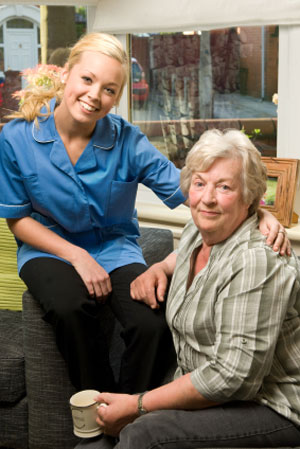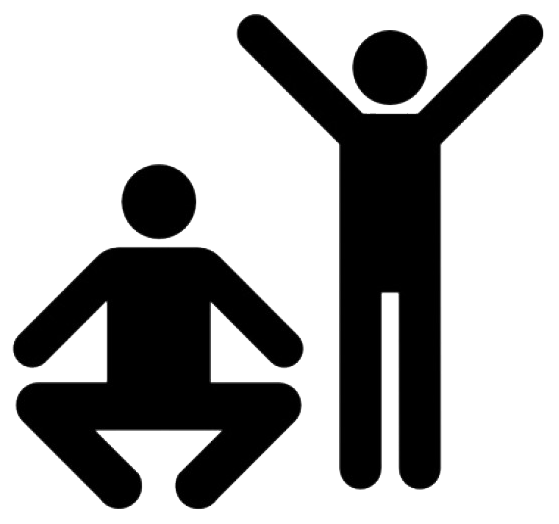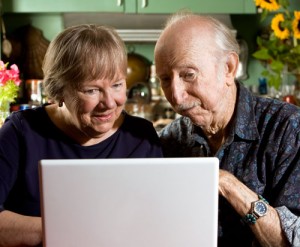A simple fall can change your life. Just ask any of the thousands of older men and women who fall each year and break a bone (sometimes called fracture).
 Getting older can bring lots of changes. Sight, hearing, muscle strength, coordination and reflexes aren’t what they once were. Balance can be affected by diabetes and heart disease, or by problems with your circulation, thyroid or nervous system. Some medicines can cause dizziness. Any of these things can make a fall more likely.
Getting older can bring lots of changes. Sight, hearing, muscle strength, coordination and reflexes aren’t what they once were. Balance can be affected by diabetes and heart disease, or by problems with your circulation, thyroid or nervous system. Some medicines can cause dizziness. Any of these things can make a fall more likely.
Then there’s osteoporosis—a disease that makes bones thin and likely to break easily. Osteoporosis is a major reason for broken bones in women past menopause. It also affects older men. When your bones are fragile even a minor fall can cause one or more bones to break. Although people with osteoporosis must be very careful to avoid falls, all of us need to take extra care as we get older.
A broken bone may not sound so terrible. After all, it will heal, right? But as we get older a break can be the start of more serious problems. The good news is that there are simple things you can do to help prevent most falls.
Take the Right Steps
Falls and accidents seldom “just happen.” The more you take care of your overall health and well-being, the more likely you’ll be to lower your chances of falling. Here are a few hints:
Ask your doctor about a special test—called a bone mineral density test—that tells how strong your bones are. If need be, your doctor can prescribe new medications that will help make your bones stronger and harder to break.
Talk with your doctor and plan an exercise program that is right for you. Regular exercise helps keep you strong and improves muscle tone. It also helps keep your joints, tendons, and ligaments flexible. Mild weight-bearing exercise—such as walking, climbing stairs—may even slow bone loss from osteoporosis.
Have your vision and hearing tested often. Even small changes in sight and hearing can make you less stable. So, for example, if your doctor orders new eyeglasses, take time to get used to them, and always wear them when you should or, if you need a hearing aid, be sure it fits well.
Find out about the possible side effects of medicines you take. Some medicines might affect your coordination or balance. If so, ask your doctor or pharmacist what you can do to lessen your chance of falling.
Limit the amount of alcohol you drink. Even a small amount can affect your balance and reflexes.
Always stand up slowly after eating, lying down, or resting. Getting up too quickly can cause your blood pressure to drop, which can make you feel faint.
Don’t let your home get too cold or too hot…it can make you dizzy. In the summer—if your home is not air-conditioned—keep cool with an electric fan, drink lots of liquids, and limit exercise. In the winter, keep the nighttime temperature at 65° or warmer.
Use a cane, walking stick, or walker to help you feel steadier when you walk. This is very important when you’re walking in areas you don’t know well or in places where the walkways are uneven. And be very careful when walking on wet or icy surfaces. They can be very slippery! Try to have sand or salt spread on icy areas.
Wear rubber-soled, low-heeled shoes that fully support your feet. Wearing only socks or shoes with smooth soles on stairs or waxed floors can be unsafe.
Hold the handrails when you use the stairs. If you must carry something while you’re going up or down, hold it in one hand and use the handrail with the other.
Don’t take chances. Stay away from a freshly washed floor. And don’t stand on a chair or table to reach something that’s too high—use a “reach stick” instead. Reach sticks are special grabbing tools that you can buy at many hardware or most medical supply stores.
Find out about buying a home monitoring system service. Usually, you wear a button on a chain around your neck. If you fall or need emergency help, you just push the button to alert the service. Emergency staff is then sent to your home. You can find local “medical alarm” services in your yellow pages.
Most medical insurance companies and Medicare do not cover items like home monitoring systems and reach sticks. So be sure to ask about cost. You will probably have to pay for them yourself.
Make Your Home Safe
You can help prevent falls by making changes to unsafe areas in your home with these home safety tips.
In stairways, hallways, and pathways:
- Make sure there is good lighting with light switches at the top and bottom of the stairs.
- Keep areas where you walk tidy.
- Check that all carpets are fixed firmly to the floor so they won’t slip. Put no-slip strips on tile and wooden floors. You can buy these strips at the hardware store.
- Have handrails on both sides of all stairs—from top to bottom—and be sure they’re tightly fastened.
In bathrooms and powder rooms:
- Mount grab bars near toilets and on both the inside and outside of your tub and shower.
- Place non-skid mats, strips, or carpet on all surfaces that may get wet.
- Keep night lights on.
In your bedroom:
- Put night lights and light switches close to your bed.
- Keep your telephone near your bed.
In other living areas:
- Keep electric cords and telephone wires near walls and away from walking paths.
- Tack down all carpets and area rugs firmly to the floor.
- Arrange your furniture (especially low coffee tables) and other objects so they are not in your way when you walk.
- Make sure your sofas and chairs are a good height for you, so that you can get into and out of them easily.


 If you’re not sure about becoming active or boosting your level of physical activity because you’re afraid of getting hurt, the good news is that moderate-intensity aerobic activity, like brisk walking, is generally safe for most people.
If you’re not sure about becoming active or boosting your level of physical activity because you’re afraid of getting hurt, the good news is that moderate-intensity aerobic activity, like brisk walking, is generally safe for most people. Getting older can bring lots of changes. Sight, hearing, muscle strength, coordination and reflexes aren’t what they once were. Balance can be affected by diabetes and heart disease, or by problems with your circulation, thyroid or nervous system. Some medicines can cause dizziness. Any of these things can make a fall more likely.
Getting older can bring lots of changes. Sight, hearing, muscle strength, coordination and reflexes aren’t what they once were. Balance can be affected by diabetes and heart disease, or by problems with your circulation, thyroid or nervous system. Some medicines can cause dizziness. Any of these things can make a fall more likely.